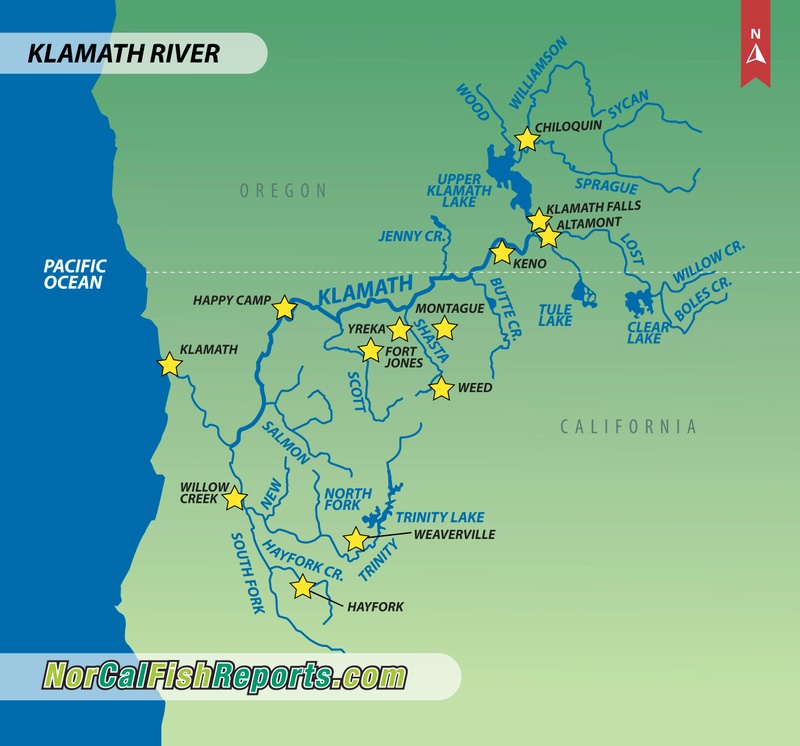Klamath River - Lower Fish Report for 2-10-2017
Iron Gate Dam flow increases over coho health concerns
Klamath River - Lower - Klamath, CA (Humboldt County)

by Bureau of Reclamation
2-10-2017
The Bureau of Reclamation will increase flows below Iron Gate Dam to reduce the risk of disease for coho salmon in the Klamath River. Starting Feb. 10 through Feb. 13, flows below Iron Gate Dam will be elevated increasing from approximately 4,000 cubic feet per second to as much as 9,600 cfs. The public is urged to take all necessary precautions on or near the river while flows are high during this period.
On Feb. 8, 2017, United States District Judge William H. Orrick ordered Reclamation to implement “winter-spring flushing flows designed to dislodge and flush out polychaete worms that host C. shasta.” The increased flow event is consistent with Judge Orrick’s Order and was planned in coordination with the National Marine Fisheries Service, U.S. Fish and Wildlife Service, the Yurok, Karuk, Hoopa Valley and Klamath Tribes, Klamath Project water users, state and other fisheries experts, and PacifiCorp.
Reclamation is implementing the increased flow event at this time to take advantage of the current hydrologic (rain on snow) conditions throughout the Klamath Basin. Pairing increased flow events with natural high flow hydrologic events maximizes the potential benefits and effectiveness of the event while reducing the amount of water required out of Upper Klamath Lake, which reduces potential for negative impacts to the overall water supply and endangered Lost River and shortnose suckers in Upper Klamath Lake. Based on current hydrologic conditions, there is high confidence that water used out of Upper Klamath Lake for these flows will be replenished quickly through inflows that are occurring into the lake.
Beginning at about noon Feb. 10, flows will begin increasing from about 4,000 cfs to about 9,600 cfs at 9 a.m. Feb. 11. Flows will remain at this high level for approximately 24 hours. After that, flows will ramp down to about 6,000 cfs during the next 24 hours, where they are anticipated to remain until about 2 a.m. Feb. 14. After this approximately 3 day event, flows will return to levels calculated in accordance with the 2013 Biological Opinion on operation of the Klamath Project.
“Reclamation recognizes that every acre-foot of water in the Klamath River Basin is extremely valuable and of limited supply, and we are making every effort to optimize the water released for fish health purposes to reduce disease among Klamath River salmonid species while balancing other demands,” said Jeff Nettleton, Reclamation’s Klamath Basin Area Manager.
Reclamation will continue to work with National Marine Fisheries Service, U.S. Fish and Wildlife Service, other fisheries experts and Klamath Basin stakeholders to comply with the Order and applicable provisions of the Endangered Species Act while upholding contractual obligations to Klamath Project water users.
Next Report >

Website Hosting and Design provided by TECK.net